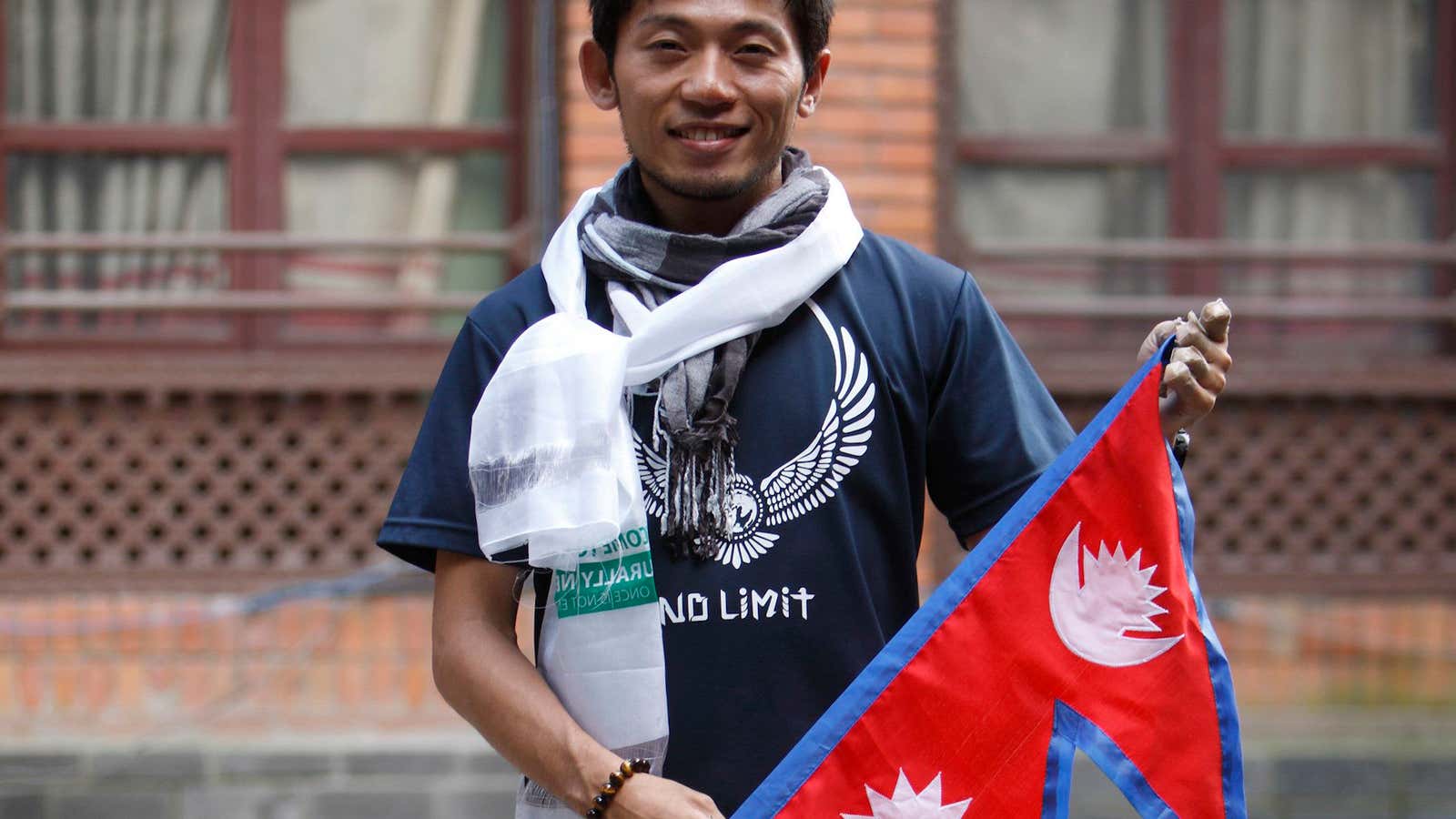After the disastrous events of April 25, when a major earthquake across Nepal shattered Nepal’s Everest region and set off an avalanche that killed 19 people at Mount Everest Base Camp, every expedition team packed up and left. The main climbing season was over a month early. It seemed that 2015 would go down in history as a year when no one touched the top of the world.
Whether any climbers would attempt Everest in the fall—given how difficult autumn expeditions are to begin with, plus the lingering instability on the mountain’s slopes as aftershocks continued throughout the summer—was hardly discussed. (Disclosure: I was at Everest Base Camp on April 25 and sustained minor injuries from the avalanche.)
But now a 33-year-old Japanese climber says he plans to summit the world’s highest mountain this September—in what will be the first expedition there since the earthquake and avalanche.
Nobukazu Kuriki lost nine fingers the last time he tried to climb Mount Everest. In October 2012 he attempted to summit alone, without using supplemental oxygen, via one of the mountain’s more treacherous routes, and he’s evidently not deterred by the risks this time.
The majority of Everest climbers make their attempts in the spring, when the weather is most ideal; in the autumn, when days are getting shorter and winter snows approach, very few teams try.
For his planned September summit, Kuriki plans to take the popular route from the mountain’s south side, crossing the crevasse-laden Khumbu Icefall—which was badly shaken by the earthquake. Kuriki has made successful solo ascents of Cho Oyu and Dhaulagiri, both 8,000-meter peaks comparable to Everest, but his four tries on Everest have been unsuccessful.
“I am climbing the mountain to stand by Nepal during this difficult time, and to spread the message that it is safe for tourism,” said Kuriki at a press conference in which Nepal’s tourism minister presented him with his climbing permit in Kathmandu yesterday (Aug. 23).
Everest climbing permits cost $11,000 per person and, among other fees the government levies for Everest access, are a major source of revenue for Nepal’s tourism ministry. Tourism is the largest industry in Nepal, and convincing foreign travelers to keep coming to the country for climbing and trekking activities is seen as essential to the country’s post-earthquake recovery.
A handful of expeditions have been approved for other tall peaks in Nepal, but Kuriki and his support team (including Sherpas and a Japanese film crew) are the only people, so far, holding permits to go on the mountain this fall.




